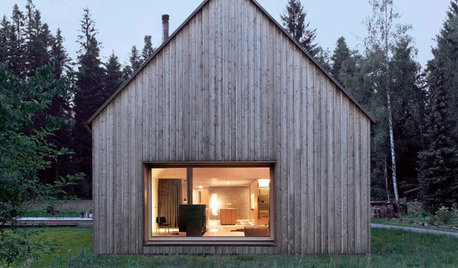Mowing high -- a few questions
freyja5
14 years ago
Related Stories

MOST POPULARA Few Words on the Power of Simplicity
An architect considers a pared-down approach to modern home design
Full Story
ORGANIZINGDo It for the Kids! A Few Routines Help a Home Run More Smoothly
Not a Naturally Organized person? These tips can help you tackle the onslaught of papers, meals, laundry — and even help you find your keys
Full Story
COFFEE WITH AN ARCHITECTA Quiz for Architects in Question
Should you trade in your T-square for a barista tray? Answer a few simple questions to find out
Full Story
DREAM SPACESJust a Few Things for the Dream-Home Wish List
A sunken hot tub, dedicated game room, tree house, hidden wine cellar and more. Which of these home luxuries would you like best?
Full Story
Easy Green: 6 Must-Answer Questions Before You Buy
Thinking about buying ecofriendly furniture? For a truly environmentally conscious home, ask yourself these questions first
Full Story
LIGHTING5 Questions to Ask for the Best Room Lighting
Get your overhead, task and accent lighting right for decorative beauty, less eyestrain and a focus exactly where you want
Full Story
WORKING WITH PROS10 Questions to Ask Potential Contractors
Ensure the right fit by interviewing general contractors about topics that go beyond the basics
Full Story
GARDENING GUIDESNo-Regret Plants: 5 Questions Smart Shoppers Ask
Quit wasting money and time at the garden center. This checklist will ensure that the plants you're eyeing will stick around in your yard
Full Story
KITCHEN DESIGN9 Questions to Ask When Planning a Kitchen Pantry
Avoid blunders and get the storage space and layout you need by asking these questions before you begin
Full Story
SELLING YOUR HOUSE15 Questions to Ask When Interviewing a Real Estate Agent
Here’s what you should find out before selecting an agent to sell your home
Full Story





bpgreen
freyja5Original Author
Related Professionals
Canton Landscape Architects & Landscape Designers · Quincy Landscape Architects & Landscape Designers · Southfield Landscape Architects & Landscape Designers · Goodyear Landscape Contractors · Brookline Landscape Contractors · Byram Landscape Contractors · Lorain Landscape Contractors · National City Landscape Contractors · San Rafael Landscape Contractors · Wilton Landscape Contractors · Winchester Landscape Contractors · Bakersfield Swimming Pool Builders · Dundalk Fence Contractors · Lady Lake Fence Contractors · South San Francisco Fence Contractorsbpgreen
Kimmsr
freyja5Original Author
bpgreen
veracan
bpgreen
dchall_san_antonio